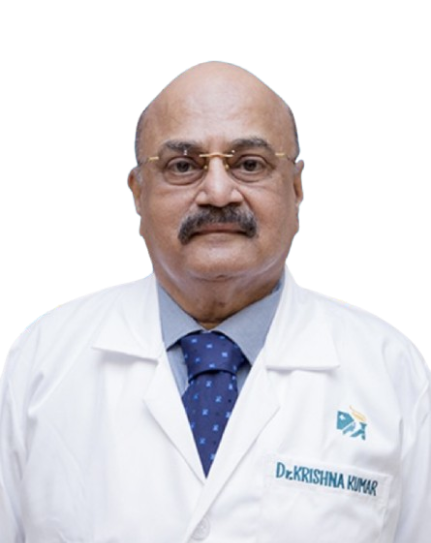Ossiculoplasty: Ear Surgery, Procedure and Success Rate

Treatment Duration
1 Hours
------ To ------2 Hours
Treatment Cost
₹ 70,000
------ To ------₹ 1,30,000

Table of Contents
- What is Ossiculoplasty?
- Conditions treated with Ossiculoplasty
- Who needs Ossiculoplasty?
- How is Ossiculoplasty performed?
- What to expect before and on the day of Ossiculoplasty?
- What to expect after Ossiculoplasty?
- Benefits of Ossiculoplasty
- Risks and complications of Ossiculoplasty
- Risks of delayed Ossiculoplasty
- Cost of Ossiculoplasty
Ossiculoplasty is a procedure in which the middle ear bones are reconstructed when they are damaged or unable to function properly. This surgery is done by using certain interposition devices that help regain the functionality of the middle ear or ossicular bones. The prosthetics used to reconstruct the middle ear bones must be compatible, safe and easily available.
Ossiculoplasty takes about 1 to 2 hours depending on the patient's age and severity of the condition. The procedure has a high success rate and improves the patient's hearing.
| Surgery Name | Ossiculoplasty |
| Disease Treated | Hearing loss, Cholesteatoma, Otosclerosis |
| Benefits of the Surgery | High success rate, Improve hearing, Reduces dizziness, Improvement in communication |
| Treated by | Otolaryngologist |
You can check Ossiculoplasty Cost here.
What is Ossiculoplasty?
Ossiculoplasty is a surgical procedure done to reconstruct the middle ear ossicular chain which has been disrupted or destroyed. This procedure helps in the restoration of the sound transmitting mechanism of the middle ear.
Anatomy and Physiology of the Ear
The human ear is an organ of hearing as it detects and analyses sound by converting sound waves into electrical impulses. The ear has three distinguishable parts: the outer, middle and inner ear.
- The outer ear comprises the visible portion called the auricle, or pinna, and the short external auditory canal which is closed by the tympanic membrane (eardrum).
- The middle ear is a narrow air-filled cavity and comprises three small bones that are the malleus, incus and stapes. These are known as auditory ossicles. These three bones connect the eardrum with the oval window. The function of the middle ear is to amplify the sound received from the external ear and transmit it to the inner ear. The pressure of the sound transmitted by the middle ear to the oval window is almost 20 times the pressure on the eardrum.
- The inner ear comprises the vestibule and semicircular canals which are responsible for postural equilibrium and the cochlea which contains the sensory organs for hearing. The inner ear also comprises the eight cranial nerves, also called the vestibulocochlear nerve.
The ear is responsible for two main functions, hearing and equilibrium maintenance and coordination of head and eye movements.
Expert Doctors (10)
NABH Accredited Hospitals (10)


Conditions treated with Ossiculoplasty
Ossiculoplasty is generally performed to re-establish and maintain the hearing quality of the person. Ossiculoplasty also helps treat other conditions including:
- Cholesteatoma
- Otosclerosis
- Myringostapediopexy
Who needs Ossiculoplasty?
Ossiculoplasty is generally performed in patients with conductive hearing loss associated with ossicular chain disruption, which leads to significant improvements in speech, social development, and overall quality of life.
How is Ossiculoplasty performed?
Ossiculoplasty procedure usually takes 1 to 2 hours, depending upon the patient's age and the severity of the condition. The procedure may be performed in the setting of IV sedation/ local anaesthesia or general anaesthesia, depending on if other procedures have also been planned. The following steps are carried out during the ossiculoplasty surgery:
- General anaesthesia will be administered, and the facial nerves are monitored. It is done to prevent damage to the facial nerves.
- A breathing tube will also be used to ease breathing if general anaesthesia is administered.
- All the vitals like heart rate, blood pressure, and breathing rate will also be monitored throughout the procedure.
- The ear will then be prepped and draped in a sterile fashion.
- The surgeon will gain access to the middle ear through the following methods:
- Transcanal approach: The tympanometry flap will be elevated by making two incisions of around 8 mm each. These two cuts will then be joined together by an additional incision to make a ‘U’ shaped flap. The middle ear containing the ossicle is reached using instruments via this ‘U’ shaped flap.
- Postauricular approach: During this approach, the surgeon can reach the middle ear by making an incision behind the ears.
- Once the surgeon reaches the middle ear, he/she will evaluate the ossicles for any defects.
- Based on the patient's condition, the surgeon will decide whether to go for autologous or artificial reconstruction.
- The surgeon may use total ossicular replacement prosthesis (TORP), partial ossicular replacement prosthesis (PORP), and incus interposition or incus replacement prosthesis.
- If the autologous graft is used, it will be harvested from the auricular cartilage.
- The prosthesis is then trimmed to a length that accounts for the thickness of the cartilage shield or cap that will lie on the prosthesis platform.
- The surgeon then will place a gelatin soaked sponge around the reconstruction to provide additional prosthesis stability.
- After the procedure is done, the ear will be covered with a waterproof dressing and will be taken to the recovery room.
What to expect before and on the day of Ossiculoplasty?
Prior to the ossiculoplasty surgery, the doctor/surgeon will discuss and prepare the patient for the surgery. These steps often involve:
Before Ossiculoplasty
- The doctor will recommend the patient go for a hearing test.
- The doctor may recommend some imaging tests and blood tests to ensure that the surgery can be done and there are no additional morbidities for the patient.
- The doctor may also ask the patient for his/her medical history. It will help the doctor in detecting any history of infection or complications.
- While taking the instructions about the medications, the patient should make sure that he/she has discussed his/her full medical history, including any supplements or medications the patient takes. It must include all the medicines, whether over-the-counter or prescribed.
- The doctor may instruct the patient not to eat anything after midnight on the day of surgery.
- However, the patient can take the prescribed medicine with a small sip of water on the day of surgery.
- Before going to the operation theatre, the nurse will inject an IV into the arm of the patient.
On the day of Ossiculoplasty
- The patient should reach the hospital before the time of surgery.
- The patient will be asked to complete a consent form before the surgery and to complete the other formalities related to the admission procedure.
- The patient should leave all their valuables items at home.
- The patient should arrive at a hospital in loose-fitting comfortable clothes.
- Before the surgery, the patient will be asked to wear a hospital information band on the wrist of the patient. This band will contain information about the patient, like name, date of birth, and the procedure to be done.
- The nurse may re-confirm the information about the patient before entering for the surgery. It is done to eliminate the chances of wrong surgery.
- Vitals will be monitored.
- The patient will then be shifted to the operation theatre.
What to expect after Ossiculoplasty?
A patient who has undergone ossiculoplasty can expect the following after the surgery:
The recovery process in the hospital
- After the surgery is complete, the patient will be moved back to the hospital ward so that he/she can recover.
- The patient may experience dull and throbbing pain in the ear after the surgery. The doctor may prescribe some painkillers to get rid of the pain.
- The patient may experience a popping sound or the squelching sound, especially when chewing and yawning.
- Fluid discharge may also be in the ear for a few days after the surgery.
- Occasionally the patient may also observe traces of blood from the ear.
- The stay at the hospital after the completion of the surgery is of about a few hours. However, the patient may require to stay overnight in some cases.
- The doctor will discharge the patient once he/she is stabilized and also will provide medications and instructions for home care and follow-ups.
Recovery process/expectation after hospital discharge
- The doctor will recommend the patient stay at home once the patient gets discharged.
- The doctor will also prescribe some medicines and ear drops after the discharge.
- The patient must not insert anything into the ear canal except the prescribed amount of antibiotic ear drops.
- Sneezing with a closed mouth and blowing the nose must be avoided for several weeks.
- The ears must be kept dry while taking a shower.
- The patient must take a leave from work or school for about 10 to12 days.
- Boarding aeroplanes may be restricted for 13 to 15 days.
First follow-up appointment
- The doctor will ask the patient to come for the first follow-up after 8 to 10 days of the surgery.
- The doctor will remove the surgical dressing from the ear canal at this appointment.
- After completion of the dressing removal, the patient is allowed to go home.
- The patient is required to come every year for the audiometry test. It is done to ensure the long-term stability of the implant in the middle ear.
- The doctor might also change the medication or advise the patient to continue with the previous medication for some more time, depending on the condition and recovery of the surgical area.
Benefits of Ossiculoplasty
Ossiculoplasty is a safe procedure with several benefits that improve the quality of life of an individual. Below mentioned are some of the benefits of ossiculoplasty:
- Technique with a high success rate
- Improves hearing
- Reduces dizziness
- Improved confidence and increased social engagement
- Improvement in sleep, communication, and behaviour of the child
Risks and complications of Ossiculoplasty
The patients usually recover quickly after ossiculoplasty, and there are rarely any risks and complications in this procedure. But in some cases, the patients may experience the following:
- Not improved conductive hearing loss
- Migration/extrusion of the prosthesis
- Necrosis of osseous graft
- Displacement of stapes
- Annular ligament disruption
- Sensorineural hearing loss (complete or severe)
When is consultation with the doctor needed?
The patient can visit the doctor if he/she is facing any kind of discomfort, such as:
- Poor hearing (this may be the symptom of improper grafting)
- Tinnitus (noises in the ear)
- Infection in the operated ear
- Fever
- Disturbance in taste
- Dizziness
- Facial nerve paralysis (this occurs in rare conditions)
Risks of delayed Ossiculoplasty
Delaying an ossiculoplasty can increase pain severity and lead to hearing loss. Below mentioned are the common risks of delayed ossiculoplasty:
- Fail to regain hearing after completion of the surgery
- Necrosis of the graft or the middle ear bone
- Displacement of stape bone in the middle ear
- Vertigo
Cost of Ossiculoplasty
The cost of ossiculoplasty ranges from ₹70,000 to ₹1,30,000. The cost varies based on the following factors:
- Age of the patient
- Type of the procedure done
- Technique and equipment used
- The medical condition of the patient
- The type of hospital facility availed - individual room or shared.
| Procedure Name | Cost Name |
| Ossiculoplasty | ₹70,000 to ₹1,30,000 |
Frequently Asked Questions (FAQ)
What are the myths versus facts about ossiculoplasty?
- Myth: Ossiculoplasty has a high risk of deafness and facial paralysis.
Fact: It is not true. There are very rare cases in which patients undergoing ossiculoplasty may develop deafness. Similarly, the risk of facial paralysis is a rare occurrence. - Myth: Undergoing ossiculoplasty always improves hearing.
Fact: In most cases, patients undergoing ossiculoplasty have a significant improvement in hearing. However, in some cases, the patients may not have any improvement in their hearing even when the hearing tests indicate positive results.
What is ossiculoplasty?
Ossiculoplasty is a surgical procedure done to reconstruct the middle ear ossicular chain. This procedure helps in the restoration of the sound transmitting mechanism of the middle ear.
What is the approximate duration of ossiculoplasty?
Usually, the ossiculoplasty procedure takes 1 to 2 hours to complete, depending on the patient's age, medical condition of the patient and the complexity of the case.
How long does it take to recover from a ossiculoplasty?
Recovery after ossiculoplasty takes about 4 to 6 weeks. General activities can be resumed as the patient feel up to it.
Who performs the ossiculoplasty surgery?
Myringoplasty surgery is performed by an otolaryngologist (ENT specialist) with other professional assistants.
What is the success rate of ossiculoplasty?
The success of an ossiculoplasty is defined by the postoperative air-bone gap (ABG) of 20 dB or better. The success rate is generally from 55% to 75%.
What are the risks associated with ossiculoplasty?
Patients after undergoing ossiculoplasty usually recover quickly. But, as with any surgical procedure, some risks are also associated with the ossiculoplasty procedure. These include poor hearing, tinnitus, infection in the operated ear, fever, disturbance in taste, and dizziness.
What are the benefits of the ossiculoplasty?
Ossiculoplasty is a safe procedure with several benefits that improve the quality of life of an individual. Some of the benefits associated with ossiculoplasty are the restoration of hearing loss, reduces dizziness, improved confidence and increased social engagement.
When is ossiculoplasty needed?
Ossiculoplasty is done when the inner ear bones are damaged because of which less sound travels into the inner ear and resulting in hearing loss. In an ossiculoplasty, one or more bones are replaced to improve hearing.
Is ossiculoplasty painful?
Patients have reported little pain after the surgery, and it takes about 6 to 8 weeks until a patient experience improvement in his/her hearing.
Is drainage normal after ossiculoplasty?
Yes, It is normal to see thick, dark or bloody ear drainage for up to a week after the ossiculoplasty surgery. The doctor will provide instructions to clean the drainage carefully.
Can I use headphones after ossiculoplasty?
Post operation, the patient should avoid putting earplugs or using earphones in the ear for the first month as it can cause pain and infection in the operated ear.
How does a person feel after ossiculoplasty?
The patient may experience dull and throbbing pain in the ear after the ossiculoplasty surgery. The doctor may prescribe some painkillers to get rid of the pain. The patient may also experience a popping sound or the squelching sound, especially when chewing and yawning.
What is the cost of ossiculoplasty?
The cost of an ossiculoplasty procedure ranges from ₹70,000 to ₹1,30,000.
Why does the cost of ossiculoplasty vary for different patients?
The cost of ossiculoplasty differs due to factors including the patient’s age, the type of procedure done, techniques and equipment used, the type of hospital, and the admission room that a patient opts for.
Does insurance cover ossiculoplasty?
Yes, all health insurance plans cover ossiculoplasty. Paperwork is facilitated by our team on your behalf ensuring smooth approval and a cashless facility. Contact HexaHealth for a simple cashless and hassle-free experience.
Last Updated on: 15 September 2022
Author
HexaHealth Care Team
HexaHealth Care Team brings you medical content covering many important conditions, procedures falling under different medical specialities. The content published is thoroughly reviewed by our panel of qualified doctors for its accuracy and relevance.






















